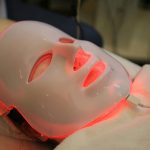By David Blyweiss, M.D., Advanced Natural Wellness
Something we are seeing a lot these days are patients who say their grandsons – who are in their 20’s and 30’s – are looking to begin testosterone replacement therapy. That should never happen, because it will affect a young man’s testicular size and future fertility.
The thing is, testosterone levels begin to fall off by one or two percent each year starting at around age 30. Over time this can have a big impact on the amount of free testosterone circulating throughout your body. Thus, low testosterone levels increase substantially with age.
So unless there are some major issues going on with these younger men, they should have much more robust testosterone levels than their aging counterparts.
Now, once you hit your late 60’s and early 70’s, all bets are off. That’s when your odds of low testosterone really start to kick in, and the symptoms are going to rear their ugly head.
You already learned about some of the simpler things you can do help prevent your testosterone levels from falling, and to boost them up if they’re low. I shared that information with you in the August 19th issue of Advanced Natural Wellness.
Now, let’s dig a little deeper.
Is Testosterone Replacement Therapy a Good Choice?
When men start to experience the weight gain, muscle loss, enlarged breasts and poor libido associated with testosterone loss, the idea of testosterone replacement therapy (TRT) sounds great.
Suddenly you’ll be manly again! Your muscles will magically pop back to life, right along with your libido. Those unmanly breasts will disappear, and your zest for life will return!
Well, not so fast…TRT isn’t magical and definitely not without side effects.
Number one is an is an increased risk of blood clots from increased red blood cell production thickening the blood. In men over 65, the odds of developing a clot in the first three months of TRT increase by about 50%. In men younger than 65, it’s much worse – nearly three times the risk.
Those clots can travel through the body and lodge in the arteries leading to the heart or brain, triggering a stroke or heart attack. Since the therapy leads to thicker blood – which causes the clots in the first place – it can also contribute to plaque buildup that blocks blood flow. So this is another risk for a serious vascular event.
And I need to be absolutely clear on one specific point: TRT should ONLY be offered to men who have genuinely low levels of testosterone. This means men whose testosterone deficiency has been confirmed by blood tests and who get the follow up blood tests as required.
With this in mind, let’s look at some of your options.
Natural Ways to Boost Your Testosterone
If you are genuinely diagnosed with low T, you can check into something called bio-identical testosterone replacement therapy (BTRT).
These are natural, plant-based, bio-identical hormones which are EXACT COPIES of the hormones your body naturally produces. They are designed specifically for your own, personal physiological make-up and metabolism. And they can work wonders to boost your natural testosterone levels.
But if you don’t qualify for replacement therapy, don’t worry. There are many other ways to spontaneously boost your body’s production of testosterone.
For example, chrysin is a flavonoid that works to prevent the conversion of testosterone to estrogen. As a result of this blocking action, it supports higher testosterone levels. And when combined with an extract of black pepper called bioperine, chrysin may help maintain lower estrogen levels and promote free testosterone levels in as little as one month. For men I recommend 150 mg of chrysin with 5 mg of bioperine daily.
I also like an herb called tongkat ali (eurycoma longifolia) that supports the production of testosterone while regulating the substance most of it gets bound to. This encourages more free testosterone to remain in your bloodstream. It only takes 100 mg daily to reinforce your testosterone levels.
Zinc is another big testosterone supporter. It helps regulate the healthy production of aromatase, the enzyme that reduces testosterone. If you’re eating a zinc-deficient diet, your testosterone levels could drop by almost three-quarters in just 20 short weeks.
Shellfish, beans, lentils, seeds cashews and meat are all good sources of zinc. Plus, if you supplement with 30 mg. of zinc daily (balanced with 3 mg. copper) it could double your T levels in six months or less.
Just make sure that, whichever route you take, you continue to eat a healthy diet, get plenty of physical activity and work to rid yourself of those excess pounds.
SOURCES:
Walker RF, Zakai NA, MacLehose RF, Cowan LT, Adam TJ, Alonso A, Lutsey PL. Association of Testosterone Therapy With Risk of Venous Thromboembolism Among Men With and Without Hypogonadism. JAMA Intern Med. 2020 Feb 1;180(2):190-197.
FDA Drug Safety Communication: FDA cautions about using testosterone products for low testosterone due to aging; requires labeling change to inform of possible increased risk of heart attack and stroke with use. Drug Safety Alert. U.S. Food and Drug Administration. Last Updated: 02/26/2018.
Gambelunghe C, Rossi R, Sommavilla M, Ferranti C, Rossi R, Ciculi C, Gizzi S, Micheletti A, Rufini S.. Effects of chrysin on urinary testosterone levels in human males. J Med Food. 2003 Winter;6(4):387-90.
Srinivasan K. Black pepper and its pungent principle-piperine: a review of diverse physiological effects. Crit Rev Food Sci Nutr. 2007;47(8):735-48.
Mohd Effendy N, Mohamed N, Muhammad N, Naina Mohamad I, Shuid AN. Eurycoma longifolia: Medicinal Plant in the Prevention and Treatment of Male Osteoporosis due to Androgen Deficiency. Evid Based Complement Alternat Med. 2012;2012:125761.
Om AS, Chung KW. Dietary zinc deficiency alters 5 alpha-reduction and aromatization of testosterone and androgen and estrogen receptors in rat liver. J Nutr. 1996 Apr;126(4):842-8. Prasad AS, Mantzoros CS, Beck FW, Hess JW, Brewer GJ. Zinc status and serum testosterone levels of healthy adults. Nutrition. 1996 May;12(5):344-8.




